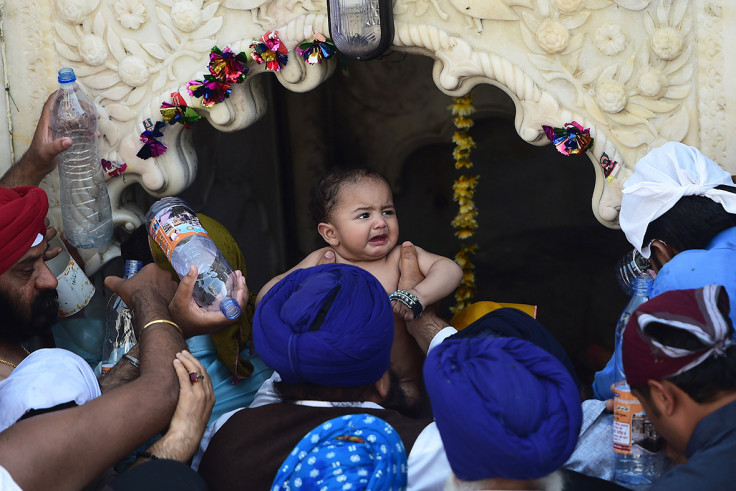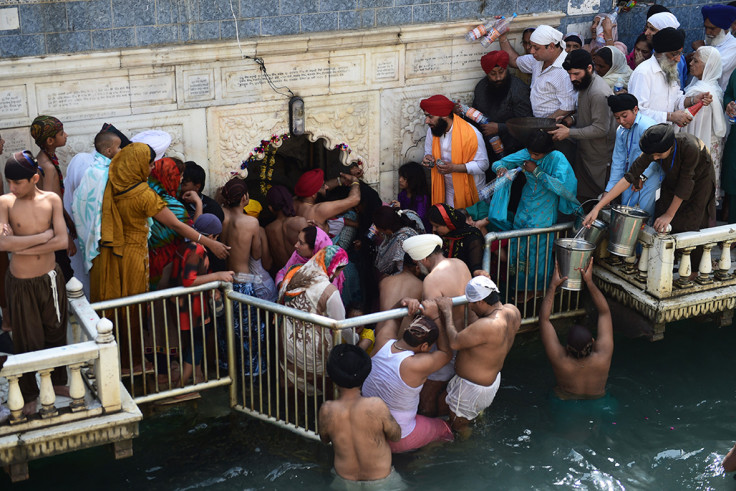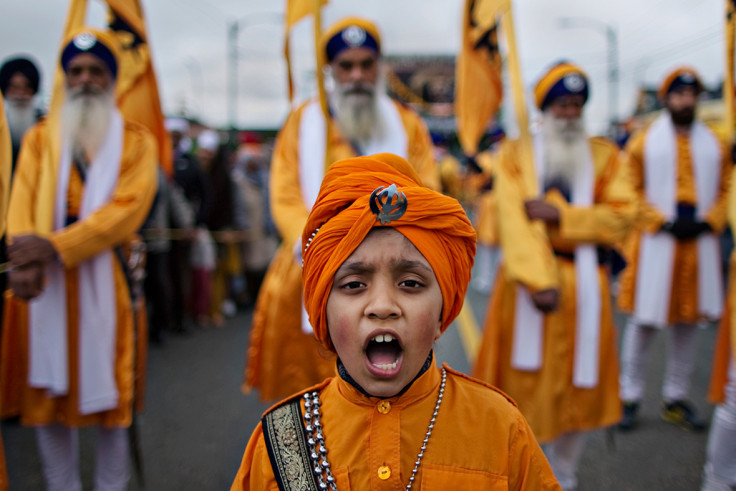Vaisakhi sees Britain's Sikh community at its most generous, hospitable and unified

This week Sikhs across the world will remember the moment in 1699 when Guru Gobind Singh inaugurated the Khalsa. I'm often asked what festivals Sikhs celebrate, and whether or not we have any special observances in the calendar year. The question is often phrased in the following terms: "Do you have something equivalent to Christmas or Easter?"
For the curious minded who engage in such inter-faith pleasantries, I advise Vaisakhi (on April 13) is one of the most important celebrations, and one which millions of Sikhs across the world will be marking this week.
For centuries Vaisakhi (or Baisakhi) has been celebrated as the spring harvest festival in The Punjab, and the Punjabi New Year. It later took on a major religious significance. In November 1675, Sikhism's 9<sup>th Guru was publicly beheaded in Delhi, on the orders of the Mughal Emperor Aurungzeb. Guru Tegh Bahadur was arrested for challenging Aurungzeb's policy of forced conversion of Hindu priests in Kashmir.
On arrest and refusal to convert to Islam himself, he was martyred along with three of his closest disciples. Aged nine, Tegh Bahadur's son Gobind Rai had the daunting prospect of guiding Sikhs through a period of great tyranny. Foreseeing the difficult times ahead, he set out to restructure the faith by placing an emphasis on martial prowess, bringing it to the forefront of Sikh ethos.
The act of transforming Sikhism into a militarised faith coincided with the Vaisakhi harvest festival in 1699. In the face of constant Mughal aggression, Sikhism's 10<sup>th Guru, Gobind Singh (Gobind Rai), formed the fellowship of the Khalsa, or 'pure'. It was an audacious public declaration signifying an uncompromising stand against a tyrannical regime.

Those baptised into the fraternity were given a distinct uniform colloquially referred to as the 5 Ks, comprising of: kesh (long hair), kara (steel wristband), kach (short breeches) kanga (wooden comb) and kirpan (short sword). Each symbol had a deeper significance, underpinned by a synthesis of spirituality with political activism. The kirpan for example, became a constant reminder to defend the oppressed, and the kanga while maintaining hair, symbolised cleanliness and order.
The first five members of the Khalsa, the Panj Piare or 'Five Beloved Ones', all came from different backgrounds, reflecting an emphasis on equality – symbolic of the democratic foundation of the faith. The Guru paid lasting tribute to the fellowship by naming all male members Singh or 'lion' and women Kaur or 'princess'. As a sign of his own reverence, the Guru chose to be initiated into the order, describing it as his "life and soul."
As a result of the distinctive turban worn by Sikhs, members of the Khalsa stood out from the crowd, and hence were prepared to sacrifice their lives for their ideals. When questioned about the Khalsa's ability to defend India's freedoms, the Guru famously uttered, "Unless I raise one to stand against a legion, cause sparrows to spurn hawks and jackals to become lions, I shall not deserve to be called Guru Gobind Singh." These weren't just mere words; the Khalsa successfully fought a number of defensive battles against the numerically superior Imperial forces.
Vaisakhi is a time to contemplate the values enshrined within Sikh tradition. Of course in a modern day context it's not easy to stand up against injustice, or speak out against bigotry. It takes courage and, in a world where most are concerned about self-preservation, selfless sacrifice for the freedoms of others is, sadly, a scarce commodity. However, these are ideals that two Gurus gave their lives for.

Professor Eleanor Nesbitt, from the University of Warwick, sits on the editorial board of Fieldwork in Religion and Religions of South Asia. She told me about the wider significance of Vaisakhi.
Nesbitt said, "Guru Gobind Singh's purpose was to transform his followers into a disciplined, recognisable community, loyal to their Guru, and always poised to resist oppression."
She added, "The Khalsa's lasting legacy is the distinctive Sikh form of the sant-sipahi, the saint soldier or warrior saint. Despite the often predominantly masculine visual image, the Khalsa expresses equality between men and women and between individuals regardless of their hereditary status."
Celebrations
25 million Sikhs across the world will be celebrating Vaisakhi by visiting gurdwaras (Sikh temples). In the Punjab, major celebrations take place at Talwandi Sabo, where Guru Gobind Singh stayed for nine months in peace time. Here he completed the compilation of the Guru Granth Sahib – the Sikh scripture, which is also considered the Supreme Spiritual Authority and Head of the Sikh religion, the 11th and last Sikh Guru. The living Guru of the Sikhs, the book is held in great reverence and treated with the utmost respect. Pilgrims will also travel to Anandpur Sahib to visit the birthplace of the Khalsa, and Amritsar to visit Harmandir Sahib, often referred to as the 'Golden Temple.'
Among the diaspora in towns and cities, such as London, with sizeable Sikh communities there will be colourful street processions called Nagar Kirtans or 'street hymn singing', headed by the Sikh scriptures, the Guru Granth Sahib. The processions are led by traditionally dressed Panj Piare, often including spectacular martial-arts displays, known as gatka.

In Southall, West London, tens of thousands attend the Nagar Kirtan annually. Devotional hymns, or 'kirtan' are sung and free vegetarian food or langaris are given to all – regardless of background, in line with the egalitarian principles of Sikhism. It's a day when some Sikhs will commit themselves to the life of a Khalsa and undertake the baptism ceremony.
Amandeep Madra, co-author of Warrior Saints and one of the founders of the UK Punjab Heritage Association (UKPHA) told me, "Vaisaikhi sees the British Sikh community at its very best; generous, hospitable, celebratory and unified."
He went on, "The street processions and the food and atmosphere that accompanies them are one of the great unknown cultural features of urban Britain. If you want to witness the real British Sikh community, come join us at any of a number of Nagar Kirtans around the country, share in our langar, serve the community with humility and join us in bringing in our New Year."
Over the weekend The Mayor of London held a special Vaisakhi event in City Hall. The family orientated event included art exhibitions, turban tying and martial arts displays.
This week the Prime Minister is hosting a Vaisakhi reception in Downing Street where prominent members of the Sikh community will be in attendance. Last year the Prime Minister made a special visit to a gurdwara in Gravesend to join Vaisakhi celebrations in the run up to the general election.
© Copyright IBTimes 2025. All rights reserved.






















